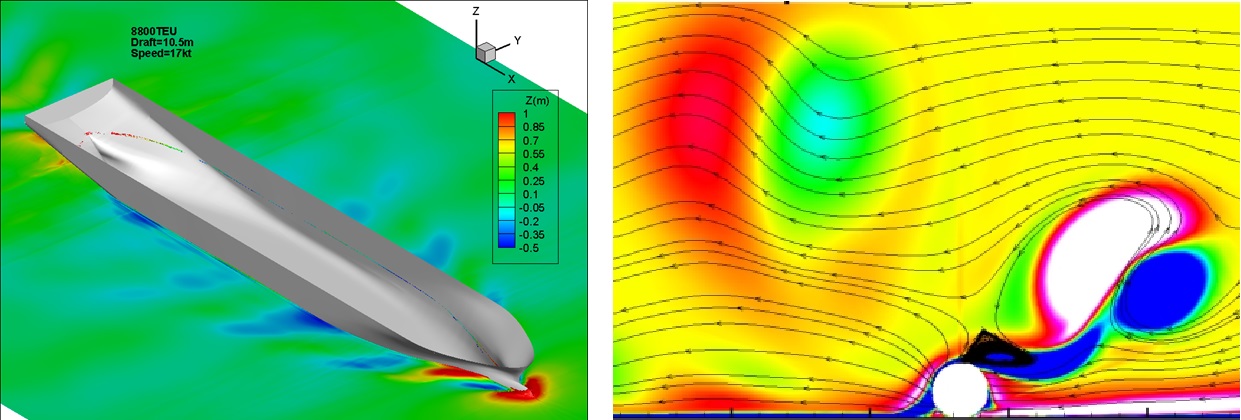- Home
- Expertises
- Hydrodynamic
PRINCIPIA’s skill in hydrodynamics is based on many years of studies and R&D projects. Principia’s engineers are adept at many hydrodynamic modelling approaches including the small bodies approach, potential theory and CFD (Navier-Stokes equations).

Resistance
PRINCIPIA offers solutions to evaluate the resistance of a ship and assess the ship’s propulsive performance. The wave-making resistance and the wave pattern can also be approximated using a potential flow solver. A precise evaluation of the total resistance can be obtained through CFD calculations.

Diffraction-radiation (Seakeeping)
The hydrodynamic solver of DIODORE™ can calculate the wave loads and radiated forces (added mass and radiation damping) which can then be used to calculate the seakeeping response of floaters. These terms can be exported to other software through the HDB format, including second-order wave loads which can be calculated using different approaches and precision levels (Newman’s approximation or full QTF matrix; pressure integration or Lagally method).
Hydrodynamic coefficients
PRINCIPIA offers CFD solutions to evaluate hydrodynamic coefficients to be used in a seakeeping model (for ship roll damping, CALM buoys…) or in a manoeuvring model (effect of drift/incidence or turning rate).
Manoeuvring
Ship manoeuvrability in open or restricted water can be studied through fast-time simulations using our software MANDOLINE™. This can be performed using either predefined or user-defined models of vessel behaviour.

Vortex Induced Vibrations
PRINCIPIA has been involved in Vortex-Induced Vibrations research and studies since 1998. Two VIV modelling approaches are available in DEEPLINESTM: either a modal based methodology or a fully dynamic simulation with a wake model based on Van der Pol oscillators (Facchinetti – 2003)
Vortex Induced Motions
The Van der Pol oscillator model can also be applied to capture VIM of Spars. Specific directional coefficients can be defined based on modal tests for spars with partial strakes. Mooring fatigue is then easily derived.
Galloping
Principia can perform analysis of riser towers or non-circular cable galloping. As part of the R&D project Gallopan, specific functionalities have been introduced and validated in DEEPLINESTM to deal with these specific topics.


